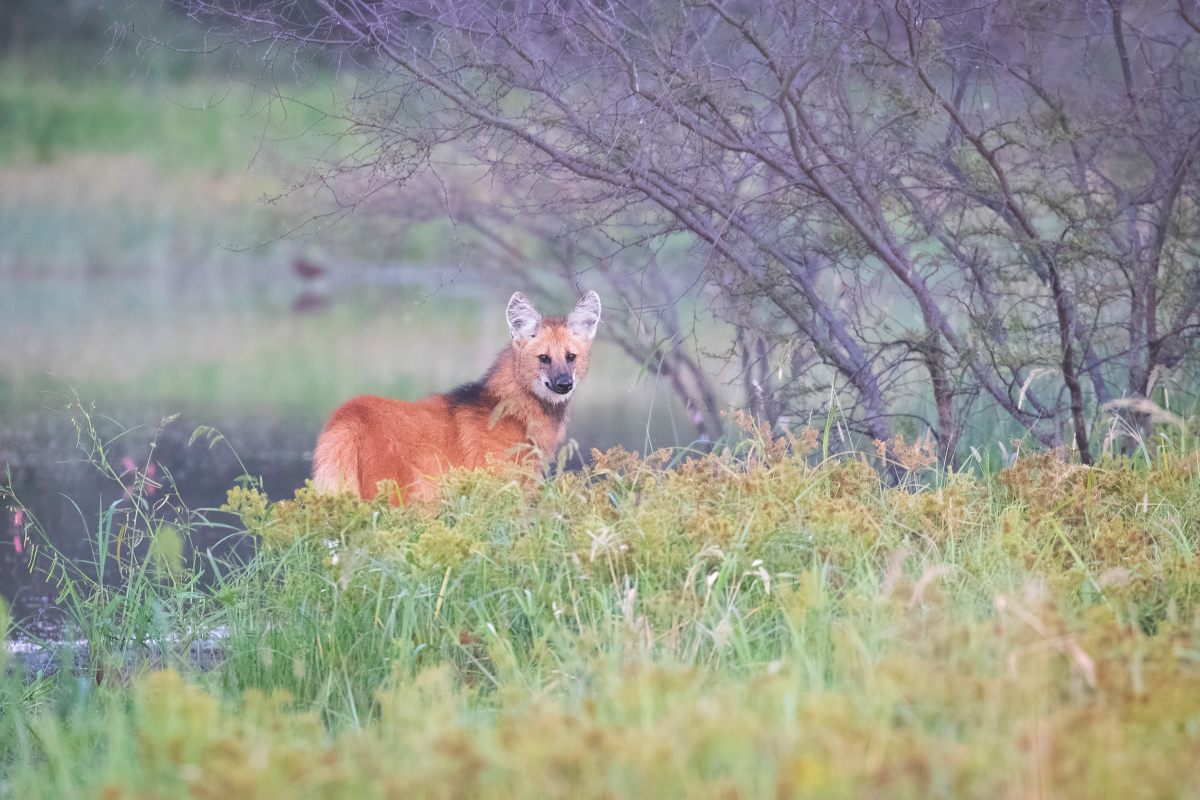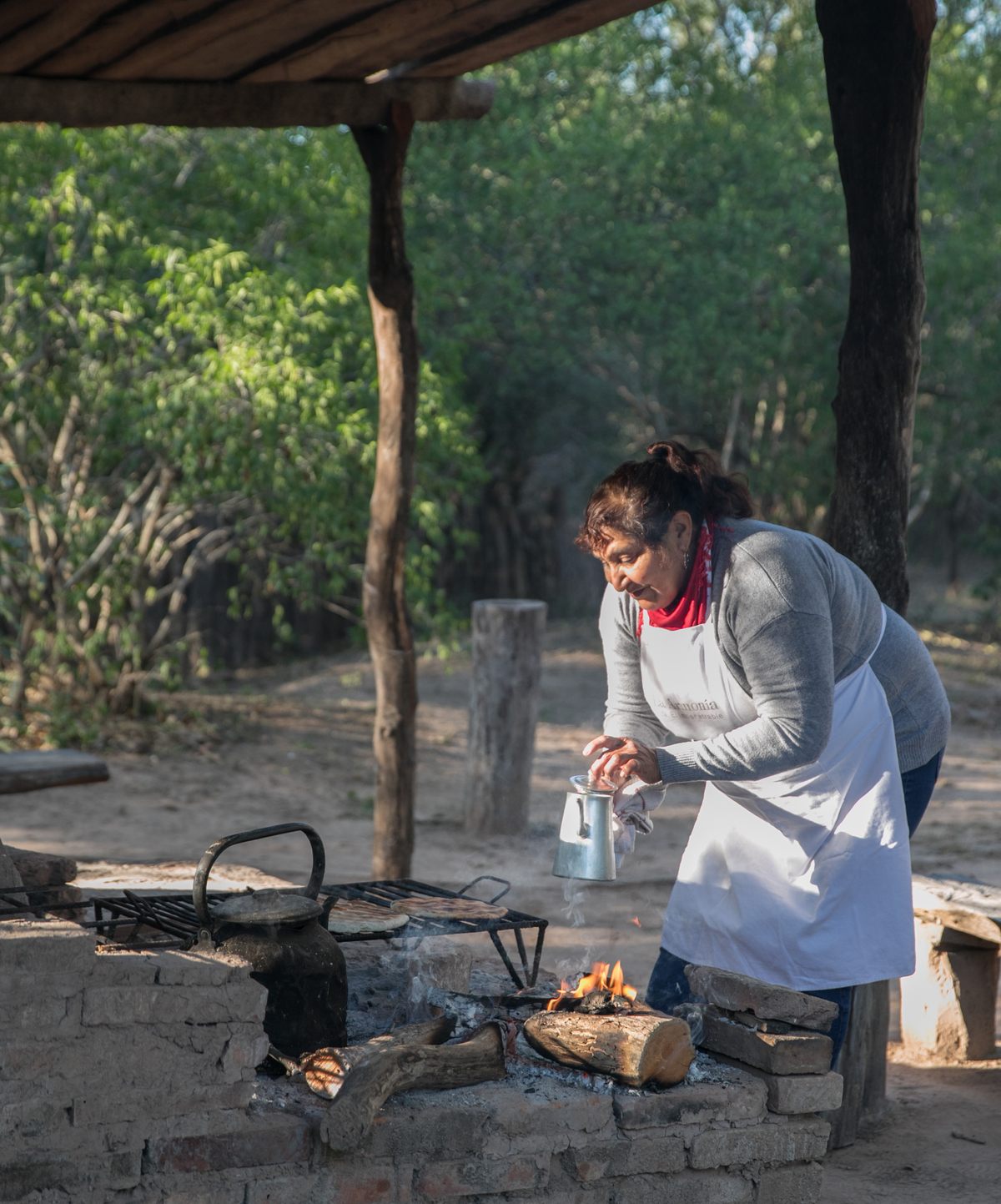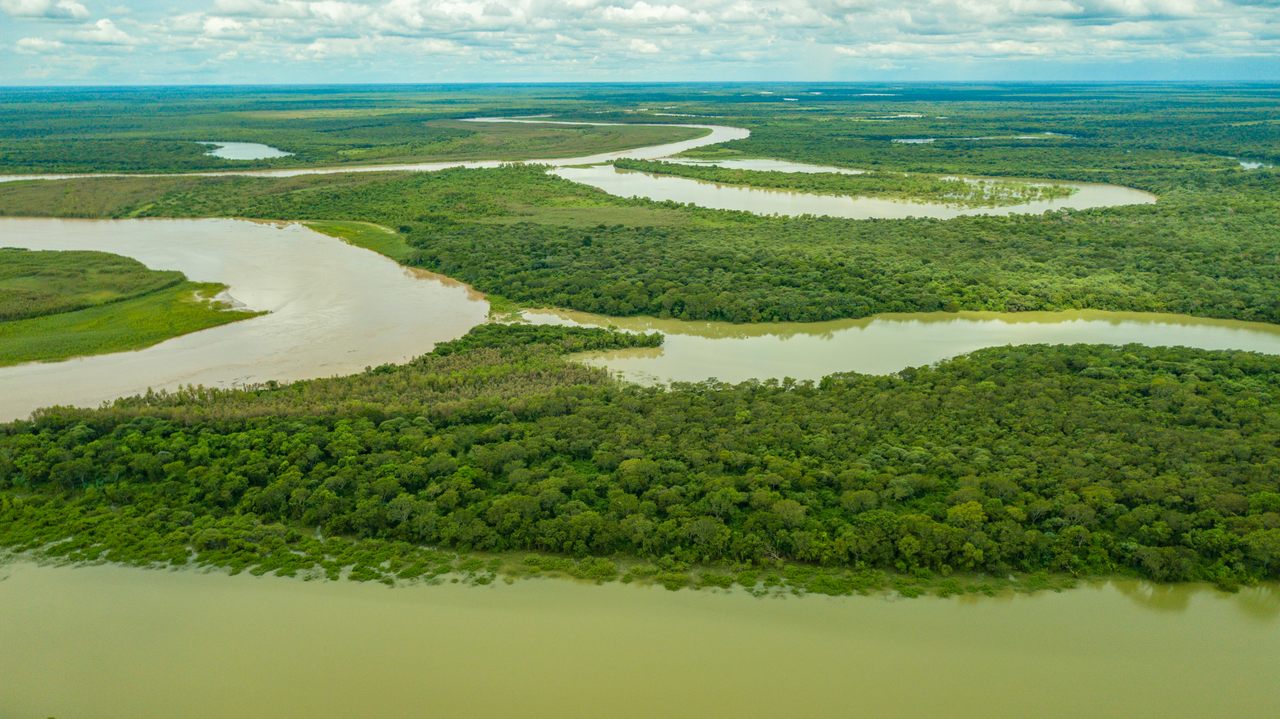Argentina’s El Impenetrable Opens Up New Options For Its People
Born from tragedy, the remote national park is bringing tourism and other changes.
El Impenetrable National Park is as daunting a landscape as the name suggests. Stands of quebracho—often called the hardest wood in the world—dominate the park’s uplands; elsewhere, thick knots of locust trees, palms, and even cacti create a dense patchwork of forest. The Teuco River winds through this corner of northern Argentina’s Chaco Province like a muddy yellow serpent, flooding seasonally and making much of the area impassable for weeks at a time. But the river also sustains resident flora and fauna during the dry season, which lasts most of the year. Deep in the shaded thickets around the Teuco, maned wolves, pumas, and even a jaguar or two hunt. Overhead, the endangered Chaco eagle rules the skies, looking for its next meal.
This expanse of nearly 500 square miles (128,000 hectares) is one of Argentina’s largest national parks, and also one of the newest. Some twelve hours by road from Buenos Aires, El Impenetrable received its special status in 2014—but it was not until 2017 that the National Parks Administration was able to overcome the challenges of the remote, unforgiving terrain and officially deploy staff to the area. The park itself has a dark origin story, rooted in murder, and communities living around its edges still grapple with alternating periods of flood and drought.
Yet El Impenetrable has another side. For some of its neighbors, including members of the region’s Indigenous Qom and Wichi communities, the park—and the tourists drawn to its mystique and offer of adventure—has opened up new opportunities.

“I can work, and share my knowledge of flora and fauna with visitors for the first time,” says Cesar Luna. The 28-year-old local grew up exploring the dense forests and swamps, and has turned his knowledge into a career as a kayak guide for tourists. Unlike many young Argentinians in rural areas, who relocate to urban areas to find work, Luna notes he’s been able to “grow economically without having to leave the place where I was born, grew up, and want to continue living.”
“This chance has made everything different for me,” he adds.
Some lifelong residents of the region were initially more wary of the influx of tourists, who still number only a few thousand each year.
“At first, people were worried about the amount of strangers coming here, because they did not know why they were coming,” says Zulma Argañaraz, a mother of eight who lives in La Armonía, a hamlet of about a dozen families within the park’s borders. “Most of us had never seen a tourist, nor knew what we could offer.”
One of the first “strangers” Argañaraz met was Emiliano Ezcurra, at the time a national parks executive. He often ate dinner at her home, and they became friends. “One time, he came to dinner with eight guests and asked me, ‘How much is this?’” Argañaraz remembers. “I had no idea. For us, dinner was always an invitation. Then he told me my recipes were wonderful and I could open my own place.”

With Ezcurra’s encouragement, and support from non-governmental agencies active in the park’s creation and the region’s economic improvement, Argañaraz opened Campo Alegre, a food stand and restaurant near one of the park entrances. The menu features traditional ingredients, such as algarroba flour, made from ground carob pods, and mistol, tiny plum-like fruits from a spiny tree of the same name that grows throughout the region.
Like several other locals, Argañaraz also works as a community representative for Rewilding Argentina, one of the NGOs committed to the park’s development. The representatives serve as bridges between their neighbors and agency staff, coordinating on projects around tourism and promotion of local handicrafts, including baskets and textiles woven from local plants. The collaborations are intended to create sustainable, locally-run businesses that also preserve the park’s flora and fauna.
“We aim for the villagers to be the ones providing services of gastronomy, hiking, kayaking, and wildlife sighting, among others,” says Rewilding Argentina’s Constanza Mozzoni. “Our goal is to ensure all of them benefit from nature and become the first wildlife guardians through the services they offer.”
The creation of the park has also eased one of the biggest stresses for Argañaraz and other La Armonía residents: accessing water. Improvements to area infrastructure include adding a system that collects rainwater into two large tanks for village use. Other projects, such as paving some of the roads to and around the park, are also planned.
The positive partnerships between outsiders and the communities within and around El Impenetrable are a contrast to the disturbing origins of the park. In January 2011, an elderly rancher, Manuel Roseo, and a relative were murdered in the small Chaco town of Castelli. The details were gruesome: Both victims had been beaten and suffocated. Although he lived simply, Roseo was one of the province’s biggest landowners, and his prized possession was the expansive ranch called La Fidelidad. In a region where much of the native forest has already been destroyed for timber or agriculture, the ranch would have been a lure for either industry.
For years, according to rumors, a variety of interested buyers had approached Roseo about La Fidelidad, but he had always refused to sell it—individuals eventually arrested for the murders had previously tried to purchase the land fraudulently. While poachers had illegally hunted, grazed livestock, and clear-cut small tracts, the ranch was largely unspoiled by human activity. Scientists and conservation organizations quickly began lobbying for La Fidelidad to be set aside as a national park, its biodiversity preserved.
After considerable legal wrangling, government intervention, and a national publicity campaign, most of the ranch was designated a national park. In addition to a burgeoning tourism industry, the park is home to the Teuco Biological Station. The field station’s staff are surveying the park’s wildlife, plants, and fungi for the first time, and are working to conserve native species that have been almost eliminated from the region, including jaguars.
As change comes to the region for its residents, human and otherwise, the remote park itself becomes a little less impenetrable.























Follow us on Twitter to get the latest on the world's hidden wonders.
Like us on Facebook to get the latest on the world's hidden wonders.
Follow us on Twitter Like us on Facebook